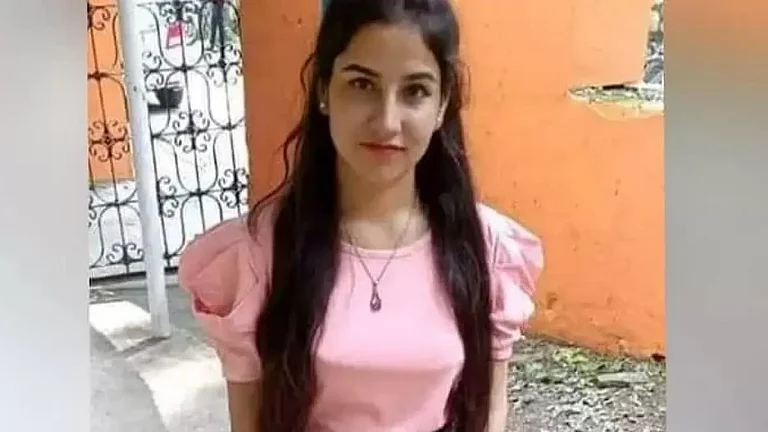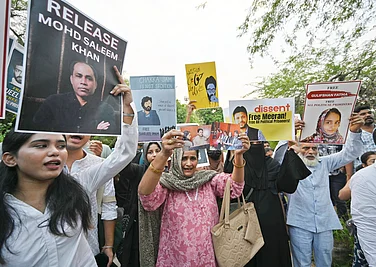More than a year after the implementation of the Agnipath scheme to recruit male and female aspirants in the Army, the families of ‘Agniveers’ want refinement in the scheme, particularly the post-service benefits and welfare of dependents in case of casualties during the fixed four-year service.
Some of the issues were raised by families in the wake of the mysterious death of Amritpal Singh — the first enlisted Agniveer soldier from Mansa in Punjab – as it led to widespread concerns about the scheme having several flaws in the policy, apparently with regard to entitled benefits and post-service career securities.
Amritpal Singh, 21, whose death eventually was claimed by the Army as a case of suicide, died in less than a month of his assuming the duty. He was posted with a battalion of Jammu and Kashmir Rifles in the Poonch-Rajouri sector along Jammu and Kashmir borders.
His father – Gudeep Singh, a small farmer – says the only thing he knew about his son was that he had thought of joining the Indian Army right in his childhood. He used to talk about the valour of the soldiers.
“After Covid-19, when this scheme – Agnipath – was announced, he did not think twice before taking a decision. I was also happy about him joining the Army like many families in Punjab take pride in their wards picking up the Army as a career. Whether it was a regular army recruitment or a short four-year service, I absolutely had no idea about it. He also never gave an impression as this being a short-term service,” Gudeep Singh says.
It was only after his death, when Amritpal Singh did not get the due protocols that Army martyrs get at the time of their last rites, that his father realised that there was something wrong. Only a Havildar and two jawans had accompanied his son’s body to the village. There was no Army contingent present for a guard of honour.
Amidst controversy, the Army issued a clarification that the Agniveer’s death (Amritpal Singh) was a case of suicide, not an army casualty. There was already a court of inquiry working to ascertain more details.
"It is a grave loss to the family and the Indian Army that Agniveer Amritpal Singh had shot himself," the army had said.
Nevertheless, Punjab’s AAP government was prompt to announce benefits of Rs one crore for the family as per its policy to take care of the soldiers’ dying while serving the force.
“Our Chief Minister Bhagwant Mann has fulfilled the commitment. We don’t differentiate between the soldiers who had joined prior to after the implementation of the Agnipath Scheme or who had been recruited as Agniveers. After all, both have the same duties to perform. It is the Centre which drastically changed the policy to deprive the youths, who choose to join the army as a career to deprive them of pensions, other welfare and pecuniary benefits,” alleges AAP chief spokesperson Malvinder Singh Kang.
He reiterates the party stand opposing the Agniveer scheme, asking for its withdrawal. "What will be the Army's pattern in the next few years, or what will 75 per cent of these youths do returning home in a border state like Punjab, which has its inherent multiple problems?" he asks.
Neither Punjab nor Himachal Pradesh has exact data as to how many youths have joined the Indian army as Agniveer during the past year, but the army recruitment offices in two states claim that response to all its recruitment drives, which also include written examinations, has been overwhelming.
One factor, especially in Himachal Pradesh, remains unemployment and lack of job opportunities in the government sector. After the Congress returned to power and despite a promise of one lakh jobs in the first year, the unemployed youths have met more disappointment than hope.
The government even scrapped a well-established recruiting body — State Staff Selection Commission (SSSC) — following a recruitment scam involving a paper leak. It took six months for the government to put in place a new recruitment body. The job aspirants are in the streets holding protests, asking for appointment letters.
“In this context, the army remains a big hope as a service provider and also a pride for those wearing the uniform, with huge benefits attached to it. But not anymore. Agniveers not only have short service of four years, but most of their financial and other welfare benefits have also been taken away. Only 25 per cent of Agniveers will be retained after four years, which needs a review,” suggests Brigadier (Rtd) Khushal Singh Thakur, a Kargil war hero.
He maintains that the government is contemplating to raise this percentage to 50. If that happens, at least some justice will be done to the Agniveers. Though he claims on the professional lines, the feedback is that Agniveers are highly motivated youths. There is no lack of commitment to their duty towards the nation. They are rather giving their best in order to secure their jobs for a 15-year period.
Himachal Pradesh has more than 1.30 lakh persons serving in the Indian Army and another 1.50 lakh retired personnel. The craze among the youths joining the force is something that can out-beat all rest of the services, including state police or para-military forces.
Similarly, Punjab also sends lakhs of its youths to the Indian army every year, as even during the Covid period, the recruitment drives were a huge success in some of the districts on the Indo-Pak borders.
Brigadier (Rtd) Kuldeep Singh Kahlon, a war veteran and Ex-director of Sainik Welfare Punjab, says, “We have a glorious tradition of serving the Indian Army and have also made supreme sacrifices for the nation. I am talking about the united Punjab that includes Himachal, Punjab and Haryana. But I feel highly disappointed with the government for changing the policy of army recruitment without holding due consultations with various stakeholders, including servicemen bodies, Sainik welfare boards and youths.”
The decision was not only abrupt but also full of serious flaws, pitfalls and a lack of policy on post-retirement protocols for those returning or for the martyrs.
Recently, when Agniveer (Akshay Laxman Gawate) died at Siachen Glacier—the highest battlefield, or Amritpal Singh in the Jammu region, questions were raised as to how Agniveers were straightway sent to such positions. This also is a basic issue of the lack of a national policy and whether Agniveers should be deployed at LOC or LAC immediately after their training. Were they physically and mentally ready to perform duties in such extreme conditions?” he asks.
“I think there is an urgent need for refinement and corrections in the Agnipath policy. If there is no total withdrawal, at least some necessary amendments are needed. Otherwise, it will have serious ramifications on the country, youths and the Indian Army in the coming years," Brigadier Kahlon strongly feels.
The Agnipath scheme, as per government claims, provides a unique opportunity for transforming the Yuva Shakti into Agniveers and facilitates potential youth to realise their dream of serving the Nation through the Armed Forces. Exposure through the Agnipath Scheme and a fostered allegiance to Naam, Namak, and Nishan would shape Agniveers into Nation Builders, union defence minister asserts Rajnath Singh, terming it a game changer scheme for the Armed Forces.


























